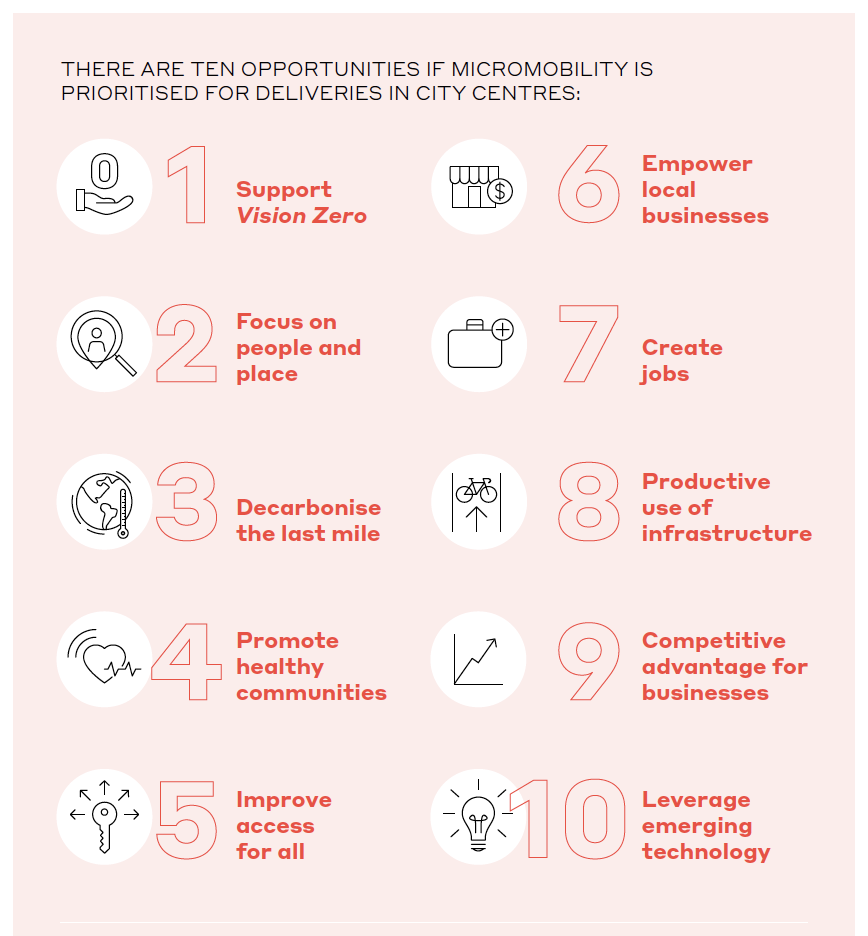Uber has commissioned WSP to complete a whitepaper – Future of Delivery – which examines how to unleash the opportunities for city centres to become greener and more liveable by increasing micromobility for the last mile of logistics.
Demand for deliveries is surging. Relying upon cars, vans and trucks for the last mile risks clogging up our local places and adding to emissions. Transitioning to micromobility, like e-bikes and cargo bikes, in our city centres offers an alternative that is better for people, places and businesses.
Increasing demand for deliveries
Over two billion people purchased goods or services online in 2020 – that’s a quarter of the global population. Enabled by technology and new delivery players, people now consider fast and efficient deliveries a ‘must have’ service.
Demand for deliveries of almost everything from ready-to-eat meals to home improvement items is on the rise. Parcel deliveries are the largest market segment followed by grocery and food deliveries. The resulting freight task, especially the ‘last mile’ that brings the service or product directly to customers, adds pressure to our cities and places resulting in pollution, congestion, and negative impacts on health and wellbeing. For freight operators, the last-mile is the most complex in terms of cost and efficiency, accounting for 53% of the delivery cost.
The last-mile delivery challenge
A legacy of designing cities for cars is that the majority of deliveries reach their final destination by cars, vans and trucks, even over short distances. This has resulted in competition for space and crowding on our roads and streets.
Relying upon cars, vans and trucks for the last mile risks clogging up our local places and adding to emissions. Transitioning to micromobility in our city centres offers an alternative that is better for people, places and businesses. An increase in deliveries will result in more delivery vehicles and congestion, adding up to 11 minutes to the daily commute, according to the Uber/WSP report.
Micromobility is a smarter way to move freight in city centres
Micromobility is emerging as the smart way to move freight in our city centres. Small, environmentally-friendly and space-efficient vehicles can have a competitive advantage over cars, vans and trucks in busy and dense city centres, where space to move and to park is increasingly at a premium.
Schemes to integrate micromobility in the last mile delivery task are already showing favourable outcomes:
- Following improvements to the cycling network, Uber Eats in Toronto has seen a 40% increase in deliveries by bike between 2019 and 2020.
- PostNL in Utrecht has achieved a reduction in CO² emissions of around 35,000 kg per year by switching to micromobility.
- The use of micro-logistics hubs in London could reduce traffic volumes by 13% and reduce harmful vehicle-related air emissions by 17% by 2025, through the consolidation of deliveries and a shift to micromobility for the last mile deliveries.
- Preliminary results from Bogota’s Bici Carga trial show that up to 4.2 tons of emissions could be avoided per year by using cargo e-bikes for last-mile deliveries.
- A pilot project in New York resulted in a 109% increase in deliveries by cargo bikes.
Delivering by micromobility is not the right option in all places. Success will depend on the city’s density, urban form, the operating environment, size and type of delivery, operator willingness, and proximity to customers. But where these ingredients come together, the last mile freight task is ripe for disruption to create better outcomes for cities and improved efficiencies for businesses.

Source: Uber/WSP
